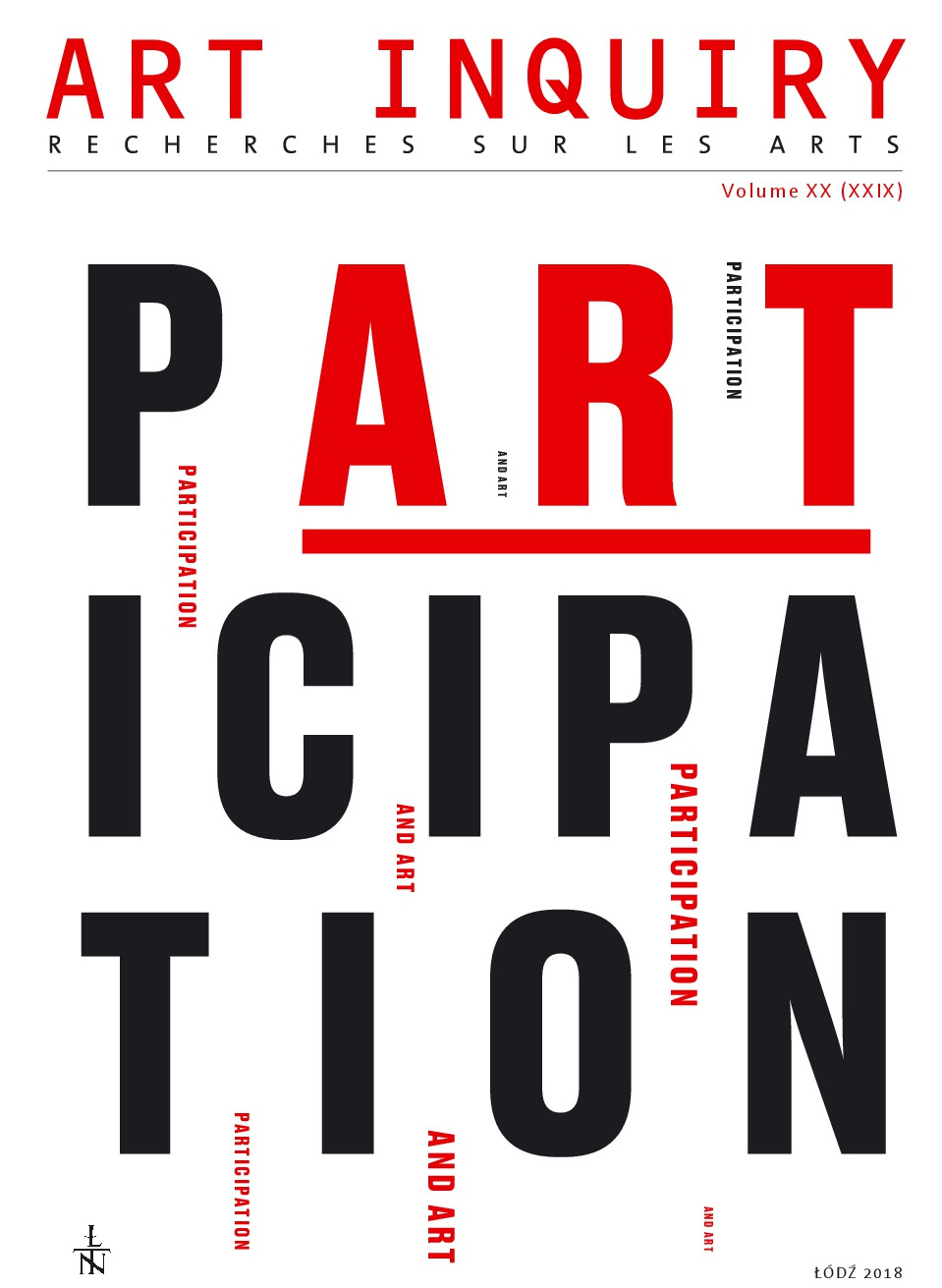Aesthetic Participation as a Realisation of Social and Cultural Poiesis
https://doi.org/10.26485/AI/2018/20/1
Abstract
In this essay, I will attempt to present a model of aesthetics based on a distinctive way of understanding artistic participation, relying on examples from the conceptions of Michel Maffesoli and Nicolas Bourriaud. My characterization does not claim to provide a complete description of the phenomenon in art and in contemporary theoretical approaches. Instead,I will attempt to show that the model, despite its narrow formula, provides a good opportunity to showcase certain shifts that have occurred in contemporary aesthetics due to late modern (especially characteristic of the post-industrial age) processes of de-autonomization. These shifts can be traced in the space of tension between two categories: distance and engagement. I will also show that the shifts open a new way of defining the subject of artistic creation. The subject no longer has an individual or intentional nature, nor yields to a substantialising characterization. The creative force is the self-articulating social life converged in human practices (and, among others – in artistic practices). In a way, Bourriaud and Maffesoli reuse a well-known philosophical template: one in which the poietic power of creation is alternately bestowed upon Nietzsche’s life, Heidegger’s or late Merleau-Ponty’s Being, Dufrenne’s self-creating Nature etc. Bourriaud and Maffesoli, in their conceptions of artistic and aesthetic participation, fall within – and this is my overall conclusion which serves as the guideline for the present analysis – in such a generally understood poietic model.



